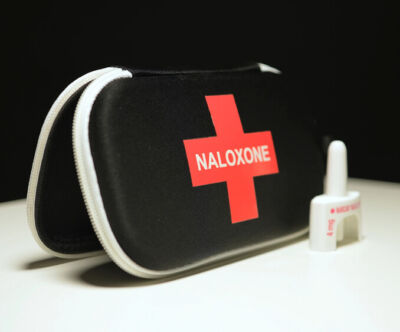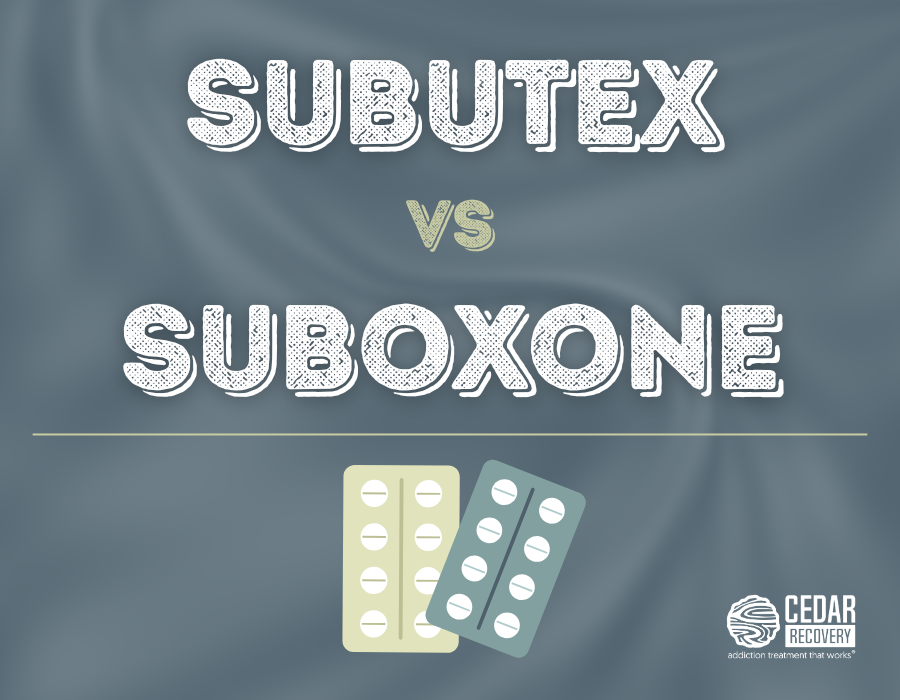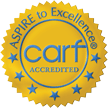The opioid crisis has led to a staggering number of overdose deaths in the U.S., but one medication is making a life-saving difference: naloxone. Commonly known by its brand name, Narcan, naloxone is an opioid antagonist that rapidly reverses the effects of an overdose. This essential medication has been a game-changer in preventing fatalities, making it a crucial tool for first responders, healthcare providers, and even everyday citizens.
In this blog post, we’ll explore naloxone, how it works, how to use it in an emergency, and where to get it. We’ll also address common misconceptions and highlight the importance of seeking professional addiction treatment to prevent future overdoses.

What is Naloxone?
Naloxone is a medication specifically designed to reverse opioid overdoses. It works by binding to opioid receptors in the brain, blocking the effects of drugs like heroin, fentanyl, and prescription opioids (such as oxycodone and morphine).
The U.S. Food and Drug Administration (FDA) has approved naloxone as a safe and effective emergency treatment for opioid overdoses. It is available under several brand names, including Narcan (a nasal spray) and Evzio (an auto-injector).
Unlike medications used for opioid addiction treatment (such as Suboxone or methadone), naloxone is not a long-term solution for opioid dependence. Instead, it serves as an emergency intervention to restore breathing and buy critical time until medical help arrives.
How Naloxone Works in the Body
When a person overdoses on opioids, the drugs slow down or stop breathing, leading to a life-threatening situation. Naloxone works by:
- Rapidly blocking opioid receptors, preventing opioids from exerting their effects
- Reversing respiratory depression, restoring normal breathing within minutes
- Acting quickly but temporarily, typically lasting 30 to 90 minutes
Because naloxone’s effects wear off before opioids entirely leave the system, it’s crucial to call 911 immediately after administration. Without further medical treatment, a person could slip back into an overdose once the naloxone wears off.
The Role of Naloxone in Preventing Overdose Deaths
The opioid crisis has claimed hundreds of thousands of lives in the United States, making overdose one of the leading causes of death. However, naloxone has played a crucial role in reducing fatalities by providing immediate intervention during an opioid overdose.
The Growing Opioid Crisis and the Need for Naloxone
According to the Centers for Disease Control and Prevention (CDC), nearly 107,000 people died from drug overdoses in 2021, with opioids accounting for nearly 75% of these deaths. Many of these deaths could have been prevented with timely naloxone administration.
Several factors have contributed to the rising opioid overdose crisis, including:
- The increased availability of synthetic opioids like fentanyl, which is 50 times stronger than heroin
- The misuse of prescription opioids often leads to addiction and dependence
- A lack of immediate access to life-saving interventions during overdoses
Public health organizations and harm reduction advocates emphasize that widespread naloxone distribution is key to saving lives. Many states have implemented laws allowing naloxone to be distributed without a prescription, making it easier for individuals, families, and communities to access.
How Naloxone Saves Lives
Research shows that bystanders are present in nearly 46% of drug overdoses. When naloxone is administered in time, it can restore breathing within 2-3 minutes, preventing brain damage and death.
The life-saving impact of naloxone includes:
- Increased survival rates: Studies indicate that naloxone distribution programs have significantly reduced opioid overdose deaths in communities with high opioid use.
- Empowering the public to act: Naloxone allows friends, family, and community members to intervene before emergency responders arrive.
- Reducing hospitalizations: When administered correctly, naloxone can prevent severe complications that require intensive medical care.
How to Use Naloxone in an Emergency
Naloxone is most effective when administered as quickly as possible during an overdose. Knowing how to recognize an opioid overdose and how to use naloxone properly can mean the difference between life and death.
Recognizing an Opioid Overdose
An opioid overdose affects breathing and consciousness, often leading to fatal respiratory failure if left untreated. The most common signs of an opioid overdose include:
- Slow, shallow, or stopped breathing
- Unresponsiveness or unconsciousness
- Pinpoint pupils (very small pupils)
- Blue or grayish lips, fingertips, or skin (due to lack of oxygen)
- Choking or gurgling sounds
- Weak or no pulse
If you suspect an opioid overdose, act immediately. Delaying even a few minutes can be fatal.
Administering Naloxone
Naloxone is available in three main forms, each with slightly different administration methods:
1. Naloxone Nasal Spray (Narcan)
 This is the most common and easiest-to-use form of naloxone. It requires no assembly and is sprayed directly into the nose.
This is the most common and easiest-to-use form of naloxone. It requires no assembly and is sprayed directly into the nose.
Steps to use Narcan:
- Lay the person on their back and tilt their head slightly.
- Peel open the Narcan package and hold the device with your thumb on the plunger and two fingers on the nozzle.
- Insert the tip of the spray into one nostril until your fingers touch the nose.
- Press the plunger firmly to release the full dose.
- Wait 2-3 minutes for a response. If the person is still unresponsive, administer a second dose in the other nostril.
- Call 911 immediately (if you haven’t already).
- If the person is breathing but unconscious, place them in recovery (on their side).
2. Naloxone Auto-Injector (Evzio)
This device functions similarly to an EpiPen, delivering a premeasured dose of naloxone via injection.
Steps to use Evzio:
- Remove the auto-injector from its case and follow the voice instructions.
- Place the injector firmly against the thigh, even through clothing.
- Press down to activate—the device will automatically deliver the dose.
- Hold in place for 5 seconds, then remove.
- Call 911 immediately and prepare to administer another dose if needed.
3. Injectable Naloxone (Requires Assembly)
Injectable naloxone is less common for non-medical personnel but is used in hospitals and by emergency responders.
Steps to use injectable naloxone:
- Fill a syringe with the prescribed dose (usually 0.4mg).
- Inject into the thigh, upper arm, or buttocks.
- Repeat every 2-3 minutes if the person does not respond.
- Call 911 and monitor breathing.
What to Do After Administering Naloxone
- Stay with the person until medical help arrives.
- Continue rescue breathing or CPR if necessary.
- Naloxone wears off after 30-90 minutes, meaning the person can overdose again if opioids are still in their system. That’s why immediate medical attention is crucial.
Where to Get Naloxone and Who Should Carry It
Naloxone is widely available and, in many cases, can be obtained without a prescription. Here’s how and where to get it.
Where to Get Naloxone
- Pharmacies: Most major pharmacies, including CVS, Walgreens, and Rite Aid, carry naloxone. Many states allow it to be purchased without a prescription.
- Community Programs: Local harm reduction organizations, public health departments, and some nonprofit groups offer free naloxone kits.
- Online Pharmacies: Some states allow mail-order naloxone through government programs.
- Doctors and Clinics: Healthcare providers can prescribe naloxone to patients at risk of overdose or their loved ones.
Who Should Carry Naloxone?
- People using opioids (including those with a prescription for chronic pain).
- Friends and family members of people at risk of opioid overdose
- First responders (EMTs, police officers, firefighters)
- Healthcare providers and harm reduction workers
Common Myths and Misconceptions About Naloxone
Myth #1: Naloxone Encourages Drug Use
Fact: There is no evidence that naloxone increases opioid use. Instead, studies show that making naloxone more accessible does not lead to riskier drug use.
Myth #2: Only Doctors Can Administer Naloxone
Fact: Naloxone is designed for anyone, including family, friends, and bystanders. Training is quick and easy, and instructions are included with every dose.
Myth #3: Naloxone Replaces Addiction Treatment
Fact: While naloxone saves lives, it is not a cure for addiction. Long-term recovery requires comprehensive addiction treatment, including therapy and medication-assisted

Beyond Naloxone: Seeking Treatment for Opioid Addiction
While naloxone can prevent overdose deaths, it does not address the root cause of opioid addiction. For lasting recovery, individuals need professional treatment that includes:
- Medication-assisted treatment (MAT): Medications like Suboxone and methadone can help manage withdrawal symptoms and cravings.
- Counseling and behavioral therapy: Addressing the underlying causes of addiction is critical for long-term success.
- Support groups and aftercare: Ongoing support can help individuals stay committed to their recovery.
If you or a loved one is struggling with opioid addiction, help is available.
Take Action: Cedar Recovery Can Help
Naloxone is a powerful tool in preventing opioid overdose deaths, but the best way to protect yourself or a loved one is to seek treatment. At Cedar Recovery, we provide:
✅ Medication-assisted treatment (MAT) to help manage opioid withdrawal
✅ Individual and group therapy for long-term healing
✅ A compassionate, judgment-free environment
You don’t have to fight addiction alone. Reach out to Cedar Recovery today and take the first step toward a healthier, opioid-free life.
References:
- Centers for Disease Control and Prevention (CDC). (2024). Drug Overdose Deaths in the U.S. Retrieved from https://www.cdc.gov/nchs/products/databriefs/db522.htm
- Centers for Disease Control and Prevention (CDC). (2022). U.S. overdose deaths in 2021 increased half as much as in 2020 – but are still up 15%. National Center for Health Statistics. Retrieved from https://www.cdc.gov/nchs/pressroom/nchs_press_releases/2022/202205.htm
- National Institute on Drug Abuse (NIDA). (2022). Naloxone Drug Facts. Retrieved from https://nida.nih.gov/publications/drugfacts/naloxone
- Wheeler, E., et al. (2015). Opioid Overdose Prevention Programs Providing Naloxone to Laypersons – United States, 2014. MMWR. Retrieved from https://pmc.ncbi.nlm.nih.gov/articles/PMC4584734/
- USA Facts. (2023). What is naloxone and how is it used in the US? Retrieved from https://usafacts.org/articles/what-is-naloxone-and-how-is-it-used-in-the-us/




